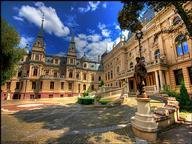Quiz Answer Key and Fun Facts
1. Krakow was believed to have been founded by Krakus, a mythological hero, who was said to have killed Smok Wawelski. Who or what is Smok Wawelski?
2. Who is the patron saint of Krakow, who as Bishop of Krakow in 1079, was murdered by King Boleslaw II?
3. Krakow was nearly destroyed and abandoned in 1241 after Poland lost the Battle of Chmielnik to which large empire?
4. What is the name of the traditional Jewish quarter of Krakow that was founded in 1495 after a large fire destroyed most of the Jewish buildings and synagogues in the city?
5. The Renaissance brought about a period of time when Krakow became one of Europe's leading cities for intellectuals. Which Polish astronomer, who placed the sun in the middle of the solar system, spent most of his life in Krakow, studied at the its university and is immortalized in a number of statues in the city?
6. Which Polish king, who was crowned in Krakow, died heirless in 1572, which eventually caused Poland to be invaded by Sweden in the 17th century?
7. Krakow into the hands of Austrian Galicia in the late 1700s. But which man, who has a mountain named after him in Australia, announced a 1794 revolt against Russian influence of Krakow in the market square?
8. The Congress of Vienna established Krakow as a free city in 1815. It became a centre for Polish nationalism and in February 1846 there was an uprising with the goal gaining Polish independence. It was led by a number of people, including Jan Tyssowski and Michal Wiszniewski. Against which power that controlled large portions of what was once Poland was it directed?
9. What is the name of the infamous extermination camp that was located on the outskirts of Krakow and where an estimated 1.15 million Jews and others were killed during World War II, including Maximilian Kolbe?
10. Karol Wojtyla became Archbishop of Krakow in 1964, but he is best remembered under what name?
Source: Author
Joepetz
This quiz was reviewed by FunTrivia editor
bloomsby before going online.
Any errors found in FunTrivia content are routinely corrected through our feedback system.

